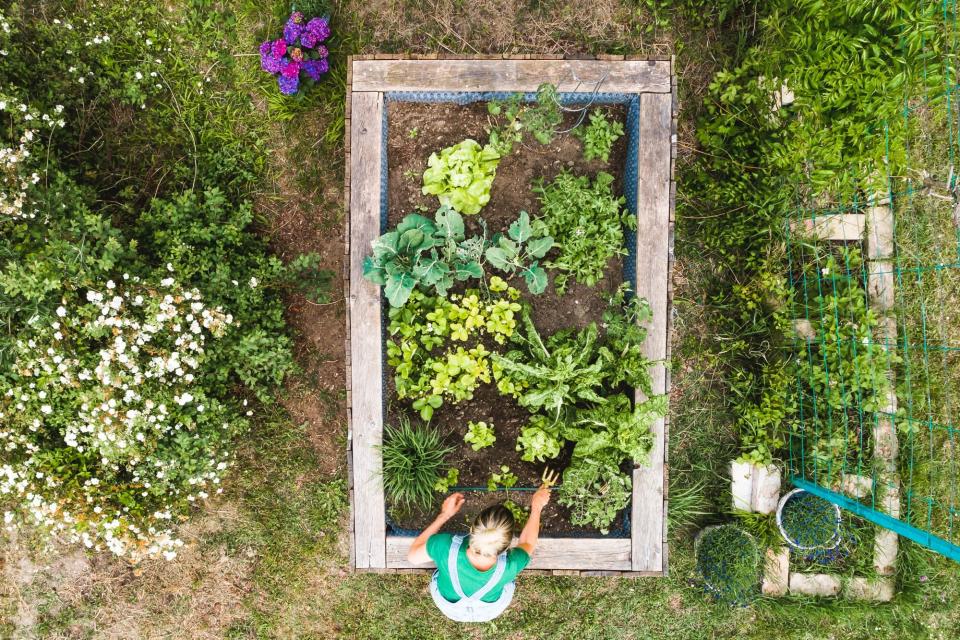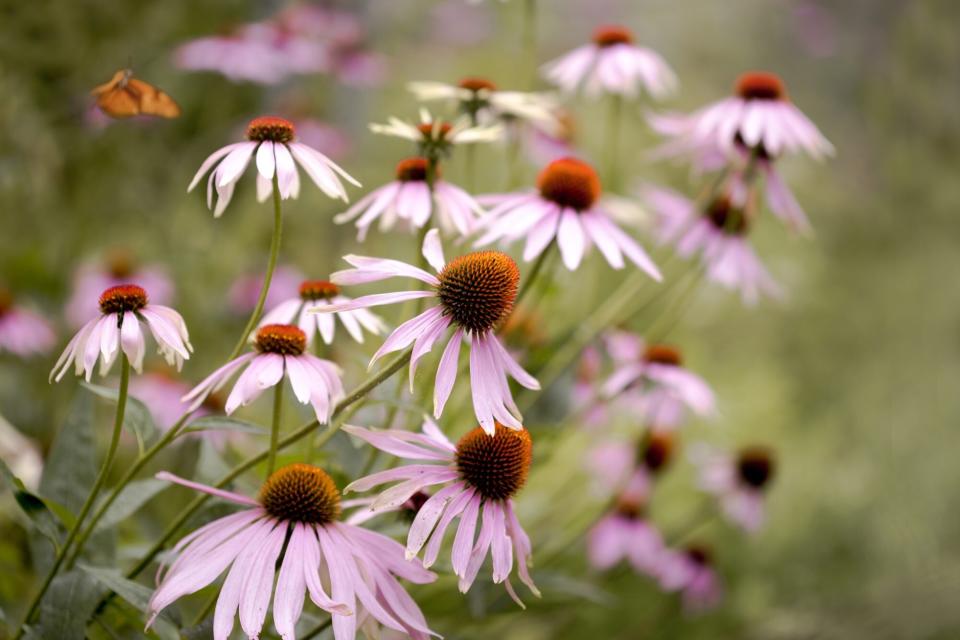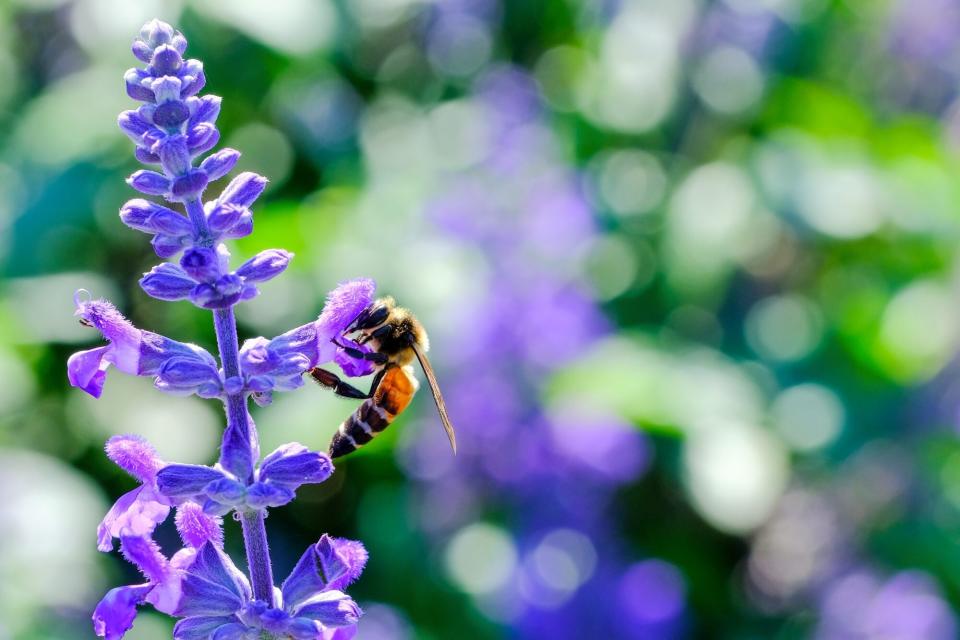Starting A Vegetable Garden
The first step is to decide which vegetables you want to grow and in what zones. Then, find a site where you can enjoy a sunny spot and close enough to a water source to keep the soil moist.

Westend61 / GETTY IMAGES
TABLE OF CONTENTS
-
On This Page
-
What Is Companion Planting?
-
Benefits
-
Plants That Deter Pests
-
Plants That Provide Shade
-
Plants That Attract Pollinators
-
Companion Planting Chart
-
Common Mistakes
-
The key to growing a successful garden is being diligent about planning. While you may like the way a plant looks in one area of your yard, it doesn’t necessarily mean that’s where the greenery will thrive. One way to ensure your flora stays healthy is by focusing on companion planting, which is the practice of growing plants that mutually benefit one another together. From edible plants to flowers, there are a handful of plants that can help prevent diseases, deter pests, and provide shade for nearby company.
Related: Your Comprehensive Guide to Starting and Cultivating a Vegetable Garden
What Is Companion Planting?
Companion planting is an important aspect of gardening, especially if you’re growing fruits, vegetables, and herbs. “It is a method of growing plants in a combination that will benefit both species,” says Carrie Spoonemore of Park Seed and the co-creator of From Seed to Spoon. For example, many gardeners grow herbs next to vegetables because they help to repel hungry pests.
Another important aspect of companion planting is considering which plants don’t like being next to each other. “Some plants get too tall and can provide too much shade for your plant,” says Spoonemore. “Sometimes, certain plants attract the same pests, so it is essential to separate these.”
Benefits of Companion Planting
There are a handful of benefits of companion planting. “A companion plant may repel pests, attract beneficial insects, benefit the growth of another plant, or improve its partner’s flavor,” says Spoonemore. “Further, companion planting could decrease the need for pesticides, attract pollinators, improve the soil, and increase your harvest.”
By improving soil quality through companion planting, you can also reduce the risk of diseases caused by nutrient imbalances spreading amongst your plants. Additionally, some plants help neighboring plants with weed control, which further supports and maximizes the use of your gardening space.
Related: How to Keep Deer Out of Your Garden

Philippe Gerber / GETTY IMAGES
Companion Plants That Deter Pests
Pests are a problem you’ll likely encounter in your garden, but companion planting can help you limit this concern. “Often, pests find pungent odors unappealing—therefore, place herbs and other strong smelling plants nearby,” says Adrienne R. Roethling, the director of curation and mission delivery at Paul J. Ciener Botanical Garden. “However, most herbs need stimulation to get the oils moving to allow the fragrance to permeate.” For this reason, you should rub the leaves of your herbs often to encourage them to release their natural scent.
Marigolds are also effective at deterring pests, especially when paired with herbs. “One great example of companion planting is the combination of marigolds and basil with tomatoes,” says Spoonemore. “The marigolds can help repel pests like aphids, while the basil can enhance the flavor of the tomatoes.”
The following plants are often used to deter pests in gardens:
-
Basil
-
Cilantro
-
Marigolds
-
Lavender
-
Chrysanthemums
-
Sage
-
Thyme
-
Petunias

Helaine Weide / Getty Images
Companion Plants That Provide Shade
One way to practice companion planting is by growing taller, fuller plants next to ones that require shade. “Companion plants that provide shade can help reduce sun exposure, which can be beneficial for some plants that prefer cooler climates or need protection from the heat,” says Spoonemore. “Shading plants can also act as natural mulch, helping keep the soil moist and reducing evaporation.” What’s more, shading plants can help you prolong the growing season of some cool season plants into summer by protecting them from that blazing afternoon sun.
Plants with an upright growing pattern will typically offer coverage for low growing plants. The following plants are often used to provide shade:
-
Parsley
-
Borage
-
Yarrow
-
Cosmos
-
Scarlet sage
-
Garden phlox
-
Coneflower
Related: How to Grow and Care for Bee Balm, the Pollinator Plant Your Garden Is Missing

Companion Plants That Attract Pollinators
Flowers with showy blooms are key if you want to attract pollinators to your yard. “Companion plants that encourage pollinators are essential because they attract bees, butterflies, and other beneficial insects to the garden,” says Spoonemore. “These insects help pollinate plants, increasing yields and creating a healthier ecosystem.”
While you likely don’t have a problem attracting pollinators if you have a flower garden, vegetable plants can benefit from some help. “Vegetable plants in the solanum family—tomatoes, peppers and eggplants—have small flowers often hidden in the foliage,” says Roethling. “But adding brightly colored flowers nearby will attract the pollinators. Most pollinators see blobs, so the more color, the better.”
Most flowers will attract pollinators, but these are some commonly used varieties:
-
Bee balm
-
Lavender
-
Sunflowers
-
Zinnias
-
Cosmos
-
Marigolds
-
Violas

Sandra Westermann / GETTY IMAGES
Companion Planting Chart
When growing edible plants in your yard, keep these popular planting combinations in mind.
Common Companion Planting Mistakes
There are a few common mistakes gardeners encounter when companion planting—and they can cause unintended stress on your plants. First, avoid choosing plants that have competing root systems, as this can inhibit growth overall. Additionally, don’t forget to consider each plant’s growth habits. “Consider plant height and size to make sure plants have enough room to grow,” says Spoonemore.
Another common oversight is planting incompatible plants too close together. “It’s crucial to remember that plants can have friends and foes,” says Spoonemore. Always check to make sure plants are compatible before planting them next to one another.
Source: yahoo.com
Leave a Reply